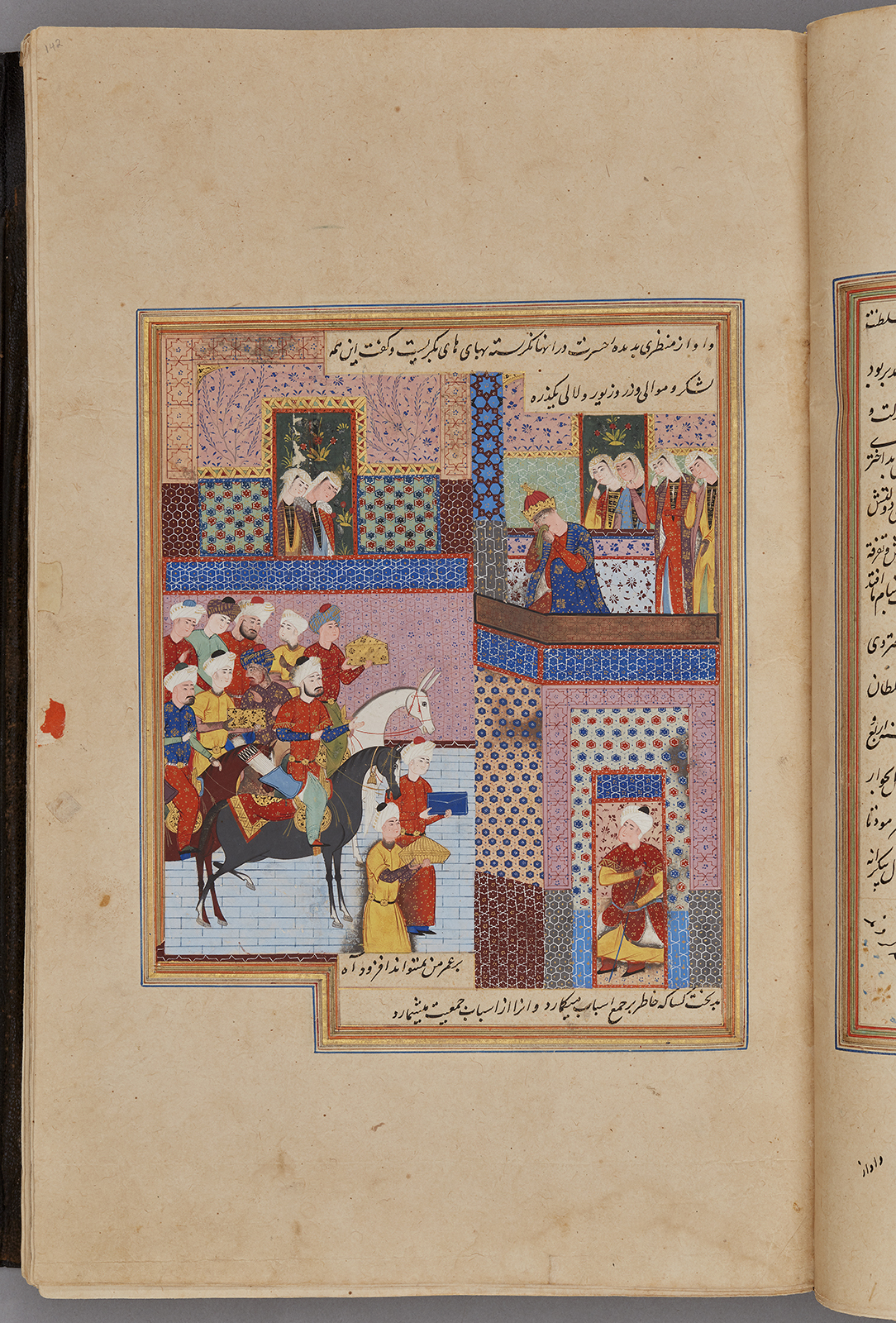Click on the image to zoom
Turkish Sultan mourning for his wife, Folio from a manuscript of Nigaristan
- Accession Number:AKM272.f142r
- Creator:Author: Ahmad b. Muhammad Ghaffari, Persian, died 1567 Scribe: Ahmad al-Shirazi
- Place:Iran, Shiraz (probably)
- Dimensions:38.7 cm × 25 cm × 6.4 cm
- Date:1573-74 CE/980 AH/AH 980
- Materials and Technique:Ink, opaque watercolour, and gold on paper
The miniature painting "Turkish Sultan mourning for his wife" is from an intact manuscript of Kitab-i Nigaristan, a collection of anecdotes and historical incidents written in prose by the historian and scholar Ahmad Muhammad Ghaffari (1504–1567/68) of Kashan in 1551–2. This illustrated manuscript, dated 1573, was probably produced in a Shiraz workshop.See AKM272 for more information about the manuscript and links to the other illustrations.
Further Reading
The main element in this miniature painting is the architecture: a three-dimensional building flattened to a single plane.
According to the text, the weeping ruler is the Seljuk sultan Muhammad, who had asked the daughter of Muqtafi—an ʿAbbasid caliph (r. 1136–60)—to marry him. The young woman tragically succumbs to tuberculosis on the way to her new groom. Sultan Muhammad orders all of his belongings to be spread out in front of him. When he sees his worldly treasures, he realizes that material items are worthless because they cannot alleviate his grief. At this realization, he weeps bitterly.
Similar to other Illustrations in this manuscript, this image depicts a building where only the façade is shown on two levels. The walls are covered with pink, green, and blue tilework. This is one of the few images where the background of the image is an architectural façade.
- Elika Palenzona-Djalili
Note: This online resource is reviewed and updated on an ongoing basis. We are committed to improving this information and will revise and update knowledge about this object as it becomes available.


